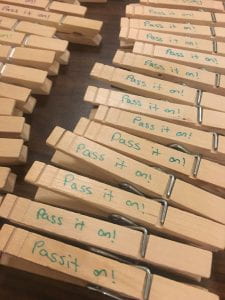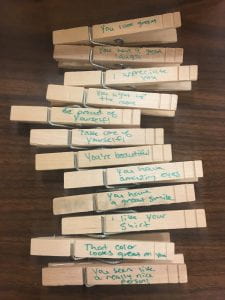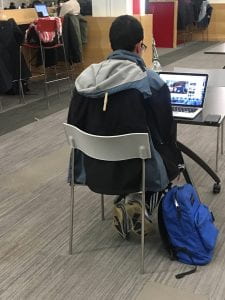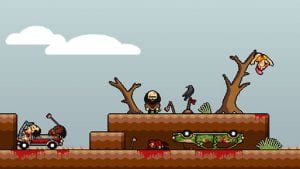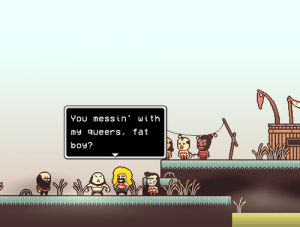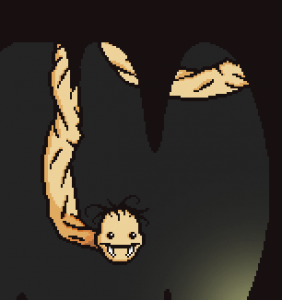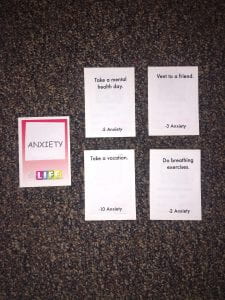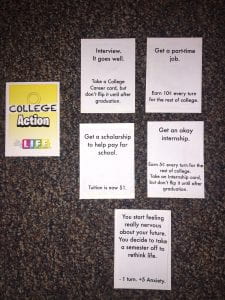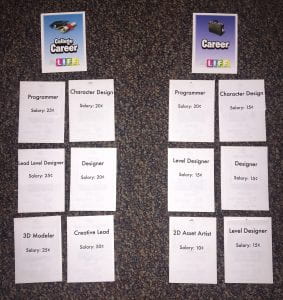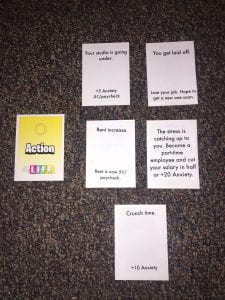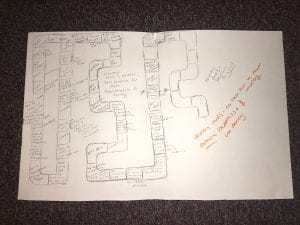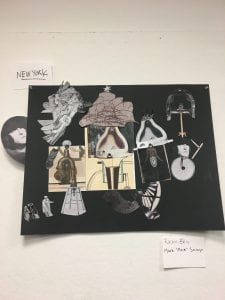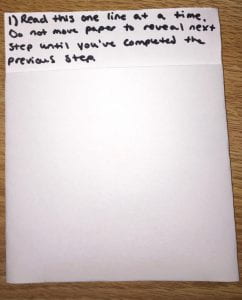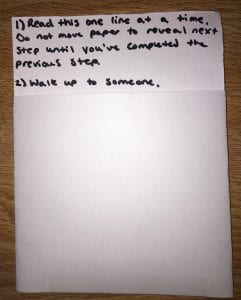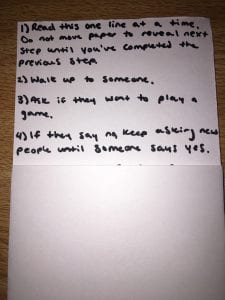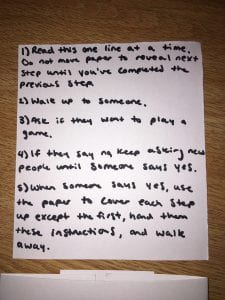About the Game:
For the final project, I created a highly immersive narrative based game that is essentially a cross between an escape room and the game Gone Home. Gameplay takes the form of engaging with physical artifacts as players sort through the protagonist’s (Lily’s) belongings and learn about her life, her struggles with mental illness, an abusive relationship, her loss of innocence, and her sense of identity. The concept is fairly straightforward but its design was very carefully considered and each artifact was carefully selected in order to achieve a certain feeling/impact/experience for the player. While the overall narrative may be hard to explain in a meaningful way, this game’s meaning undoubtedly comes from the narrative and the physical space that the player interacts with.
The game contains several artifacts. They are as follows:
A lamp
A letter from Lily’s mother
A DVD given to her by “J” (Jake)
A polaroid camera
Several books, one of which contains hints to a password that unlocks Lily’s computer
Lily’s computer, which contains a password-protected folder that contains transcripts of Facebook conversations Lily and her abusive boyfriend Jake have had
And, most importantly, a journal, which tracks a year in Lily’s life
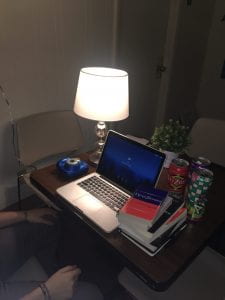
The entire setup

The letter from Lily’s mother

A hint page in one of the books
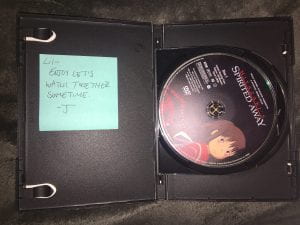
The DVD
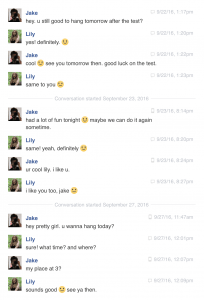
Sample of a Facebook conversation found in locked folder on Lily’s computer
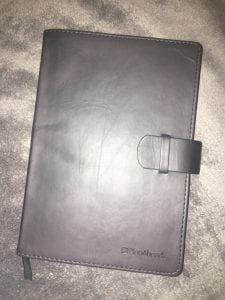
The journal
Sample pages from journal:
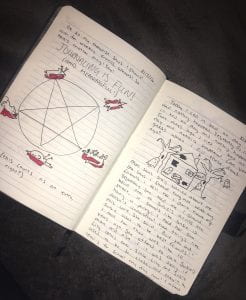
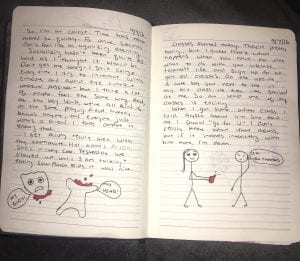
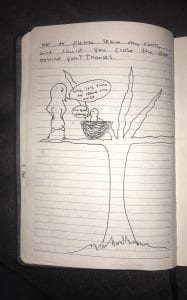
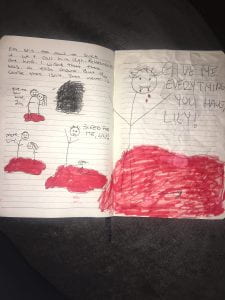
All of these artifacts, which the player gains and uncovers by examining other artifacts, piecing together information, and solving puzzles, help to tell Lily’s story. It becomes clear why each of them are in the space as the player begins to piece together the story and draw conclusions. Each artifact was carefully chosen with the purpose of immersing the player in Lily’s story and making the setting and story feel more real and relatable.
The journal is the artifact that tells the majority of Lily’s story, though the Facebook messages and other artifacts help fill in some of the blanks. In addition to straightforward entries, the journal contains pictures that create visual representations of what Lily is feeling. During times of high anxiety, the pictures are more gruesome and are generally pretty creepy and highly abstract, and during more relaxed times, there are more straightforward, representational images. Often during these more relaxed periods of her life, there are no pictures at all, meant to represent the fact that she can adequately express how she is feeling with her words, while her anxiety and depression are harder to verbally express.
Each entry in the journal has a date on it, and during stressed times, Lily will write several entries a week, whereas during relaxed times, she will check in only about once a month. The dates also help the player to keep tabs on her abusive relationship, as, towards the end of the journal, Lily begins to write less and less even though she expresses feeling high anxiety, as her significant other is beginning to demand more and more of her and she finds herself spreading herself far too thin and feeling trapped.
Playtests/Player Feedback:
I conducted two playtests of the entire, completed game. The playtests took about 20-25 minutes each. Footage of one (along with the player’s thoughts) is available at the link at the bottom of this post.
Both players had very positive reactions to the game. They said that the game was very intense and immersive and that they easily emotionally connected with Lily, allowing them to gain a sense of authentic empathy for those who may struggle with some of the same problems as Lily. Overall, I think that this game accomplishes exactly what I intended, and based on the players’ reactions, I think it may have the potential to have even more of an emotional impact on players than I initially imagined.
Inspiration:
I was largely inspired by the indie artgame Gone Home, which, similarly to my game, tells the story of an elusive protagonist who never actually makes an appearance in the game. Yet, by the end of the game, the player is meant to feel very connected to the protagonist and to have empathy for her circumstances. I was going for a very similar theme with A Year in Her Life. I wanted to apply certain ideas that I really care about that are not generally portrayed in games and create a sense of empathy within the player for those who struggle with these things. I very quickly knew that, unlike Gone Home, I wanted A Year in Her Life to take place in a physical space, as I think that the actual physical presence of artifacts made the story feel more real and made Lily feel like a real person. This was definitely a decision I made with class teachings in mind, as I carefully considered the atmosphere and medium of the game and how this would impact the player’s experience, which is one of the main concepts I took away from this class. This project really gave me the chance to carefully consider the artifacts I would use, the forms they would take, how they would aesthetically work together, and how this would impact the overall mood and tone of the game and narrative. I think that the unit that most impacted the choices I made while designing this artwork was the intervention- I wanted to create the feeling of almost a reverse intervention in which the player is intervening in the life of a character that doesn’t actually exist, but I still wanted the player to feel as if they were intervening in some way and being invasive, and based on player reactions, I would say that this was accomplished.
Documentation/Video of Gameplay: https://drive.google.com/file/d/1T8yfs6xb7xRp5qVdIztXmaRwOuHhd7Hd/view?usp=sharing

